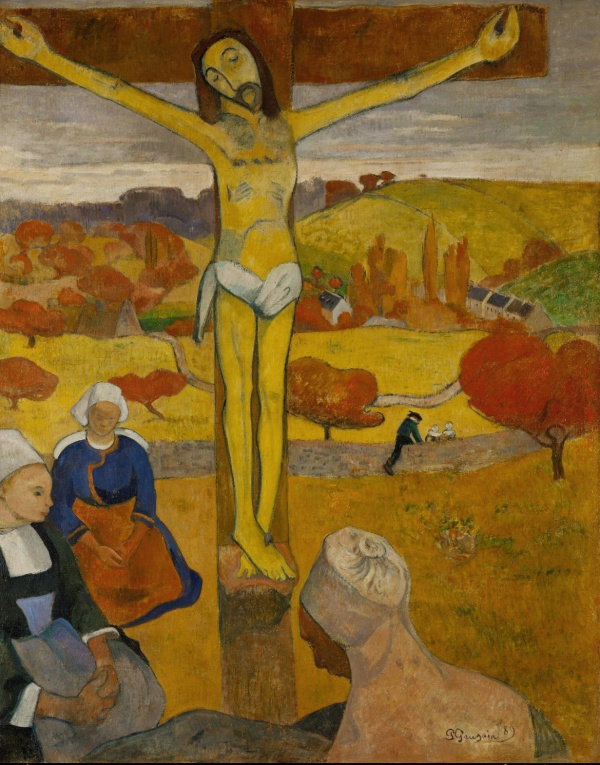Facts About The Yellow Christ
"The Yellow Christ" painted by Paul Gauguin in 1889, is a remarkable piece in the art world. Gauguin created this work in Pont-Aven, a small town in France that profoundly influenced his artistic style. This painting, along with "The Green Christ" is regarded as a quintessential example of Symbolism in art.
Gauguin first visited Pont-Aven in 1886, returning in early 1888 and staying until mid-October. After a brief period with Vincent van Gogh in Arles, he returned to Pont-Aven in early 1889 and remained until the spring of 1890, with a short trip to Paris in the summer of 1889 for the Exposition Universelle and the Volpini Exhibition.
In "The Yellow Christ" Gauguin depicts the crucifixion of Jesus with a unique twist, setting the scene in 19th-century northern France. The painting features Breton women praying around the cross. Gauguin employs bold outlines for the figures and nuanced shading for the women, with the landscape rendered in an autumn palette of yellow, red, and green, which complements the dominant yellow of Christ's figure. This vibrant use of color and flat forms is a signature of the cloisonnist style.
For those interested in exploring more of Gauguin's work related to "The Yellow Christ" a pencil study of the painting is housed in the Thyssen-Bornemisza Museum. Additionally, a watercolor version is part of the Art Institute of Chicago's collection, generously gifted by Elizabeth F. Chapman.

 Canada
Canada